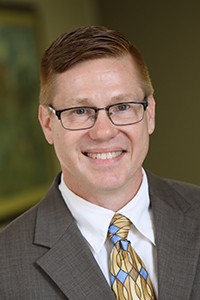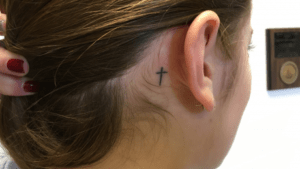Parents are often disappointed when a teen or adult child acquires a tattoo.
But a newly published study led by Baylor University scholar Kevin Dougherty suggests Mom and Dad may want to go easy when the images are religious in nature.

Kevin Dougherty
“This made me realize that a lot of people are using tattoos to express their faith,” said Dougherty, an associate professor of sociology.
The study, published recently in the journal Visual Studies, examined 752 tattoo photographs taken by sociology students on the Baylor campus in Waco, Texas. Close to 20% of students’ body art was religiously themed.
By studying the images, Dougherty said, he and co-author Jerome Koch of Texas Tech University were able to tease out some common denominators about faith-based body art.
One common denominator has to do with where a tattoo is on the body and who the intended audience seems to be.
“One of the most interesting findings for Dr. Koch and me was that religious tattoos were more likely than non-religious tattoos to face the owner,” Dougherty said.

(Photo/Baylor University)
“They are more likely to look upside-down because they are intended to be viewed by the wearer,” he said.
Such images often are found on the inner wrist, forearm and bicep. Non-religious tattoos are more often inked into shoulders, backs, legs and the sides of the torso.
“Those are primarily for other people” to see, he said.
But there might be overlap in the visibility of tattoos, said Koch, a professor of sociology.
A subtle spiritual image on the wrist, say, may be intended to evoke curiosity in those who glimpse it.
“People are using tattoos the way they used to use other things before, such as jewelry, that provide a source of strength and perseverance,” he said.

Jerome Koch (Photo/TTU)
“These decisions are strategic,” Koch added. “When someone chooses to wear a tattoo, they think of what they want it to say, if anything, to other people.”
Tattoos that are deliberately hidden can also be religious in nature and connected with deeply personal memories or emotional conflict, Koch said.
The motivations behind the selection and placement of religious tattoos will be the subject of coming studies, Dougherty said. Denominational breakdowns and other age groups also will be examined.
But just going by the photos from Baylor tells researchers that faith-motivated tattoos often are both a proclamation and a reminder of religious identity, Dougherty said.
“At Baylor, the most common depiction was some form of the Cross,” he said.
Those included simple, two-dimensional representations to complex, multi-colored tattoos that sometimes superimposed with images of Christ and other elements.

(Photo/Baylor University)
Altogether, 14 different books of the Bible were either referenced or quoted in some students’ tattoos, with the Psalms being the most popular source.
“We also saw entire verses tattooed on individuals,” Dougherty said.
It gets back to the notion that tattoos for many are a proclamation of identity and belonging to a particular faith tradition.
And given that more than a quarter of American adults, including half of millennials, have tattoos, it’s a trend that’s likely to continue.
“With the permanence of tattoos, people are very carefully choosing what they are putting on their bodies,” he said.
